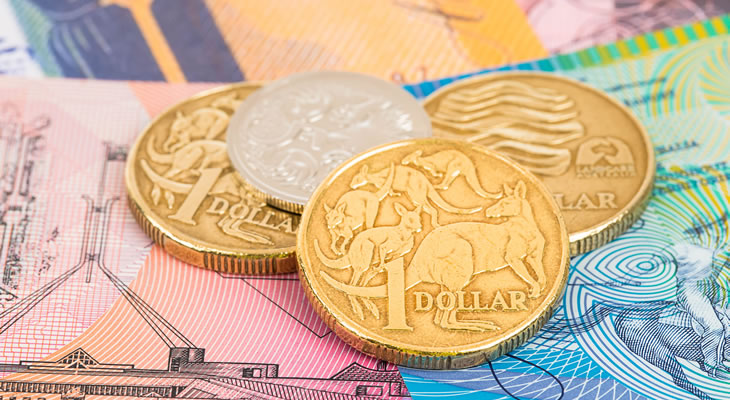Australian Dollar (AUD) Softens in spite of Improved Conference Board Leading Index
Despite the Australian Wage Cost Index holding steady on the quarter and a moderate improvement on the Conference Board Leading Index overnight, the ‘Aussie’ (AUD) has seen a slump in demand on Wednesday morning. Nevertheless, the GBP/AUD exchange rate remains on a narrow downtrend in the region of 2.1382.
Earlier…
Following a more optimistic set of minutes from the November meeting of the Reserve Bank of Australia (RBA) the GBP/AUD exchange rate has been on a sharp downtrend, weighed down today as UK inflation remains negative.
Market Risk Aversion Weighed on ‘Aussie’ (AUD), Pound (GBP) Softer on Housing Bubble Fears as House Prices Rise
Although the start of the week saw the UK’s Rightmove House Price Index strengthen on the year this failed to offer particular support for the Pound (GBP). On the contrary, as house prices accelerated from 5.6% to 6.2% traders appeared increasingly cautious over the possibility of a bubble developing within the housing market. Although this could be considered a source of pressure for the Bank of England (BoE) to begin tightening monetary policy Sterling nevertheless softened.
However, an atmosphere of general market risk aversion prevented the Australian Dollar (AUD) from particularly taking advantage of the weakness of its rival yesterday. Rising geopolitical tensions drove traders away from both commodity-correlated and emerging-market currencies, with demand increasing for safe-haven assets such as gold and the US Dollar (USD). Australian New Motor Vehicle Sales were also down on the year, retreating from 7.8% to 4.2% in October, leaving little incentive to buy into the antipodean currency.
UK CPI Fails to Impress with Negative Inflation Today, GBP/AUD Conversion Rate Extends Losses
Overnight the November meeting minutes of the Reserve Bank of Australia (RBA) were published, prompting something of a rally for the ‘Aussie’. While policymakers did highlight some continued concerns over negative global pressures the minutes reaffirmed the less dovish assessment of the domestic economy, indicating that the central bank is unlikely to move to loosen monetary policy in the near future.
It was a slightly mixed result for the Pound this morning, on the other hand, as the latest UK Consumer Price Index showed that inflation had remained negative on the year at -0.1%. While the monthly gauge did print at a more reassuring 0.1% this did not prove adequately bullish to suggest that the BoE could be prompted into raising interest rates over the next few months. Devaluation fears are weighing on the Pound today as this figure marks the first instance of the year-on-year CPI falling for two consecutive months, extending the current slump of the GBP/AUD exchange rate.
GBP/AUD Exchange Rate Forecast: Australian Dollar Predicted to Advance on Strengthened Domestic Growth
Tonight’s Australian Westpac Leading Index, Conference Board Leading Index and Wage Cost Index results could shore up the antipodean currency should the figures offer further demonstration of the continued recovery of the domestic economy.
Later in the week, the UK’s October Retail Sales data is unlikely to provide a stronger rallying point for Sterling, with forecasts suggesting that consumer demand slowed from 5.9% to 3.9% on the month. Although pundits may be inclined to dismiss this slowness as a result of shoppers holding off in advance of the November discounts, a weak printing will not particularly improve the outlook of the Pound.
Current GBP, AUD Exchange Rates
At time of writing, the Pound Sterling to Australian Dollar (GBP/AUD) exchange rate was slumped in the range of 2.1349, while the Australian Dollar to Pound Sterling (AUD/GBP) pairing climbed bullishly around 0.4682.


Comments are closed.